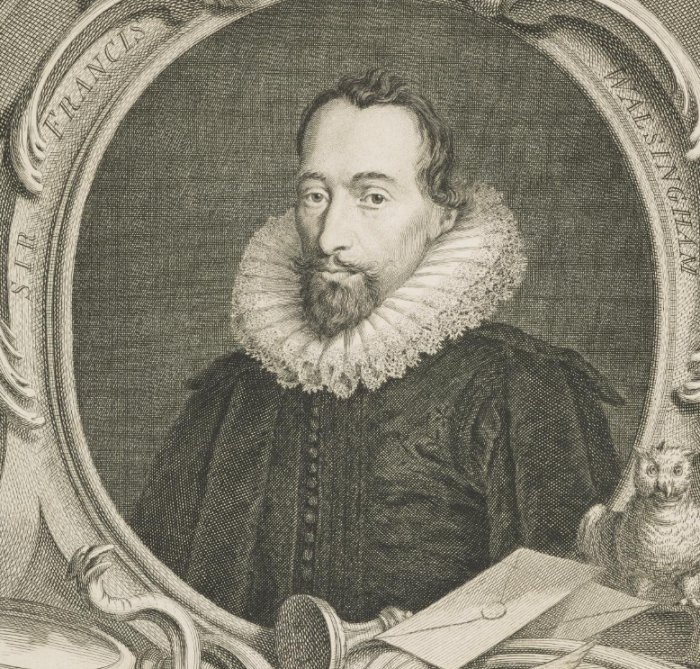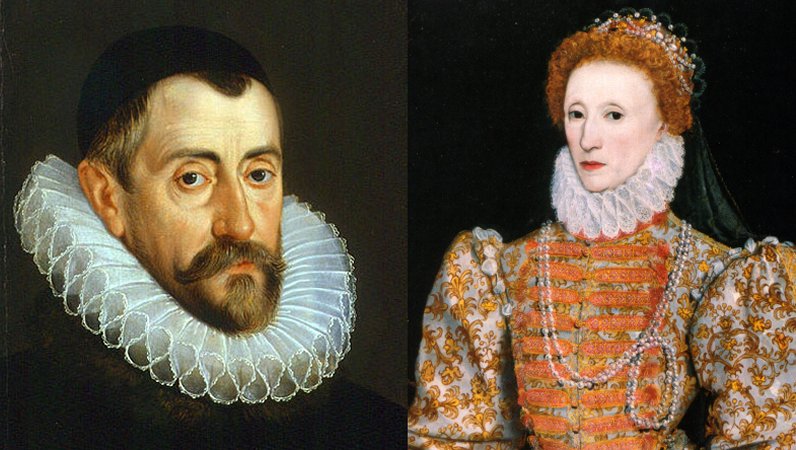Sir Francis Walsingham: Spymaster, Politician And Trusted Adviser To Queen Elizabeth I
A. Sutherland - AncientPages.com - Francis Walsingham was an English politician and most trusted adviser to Queen Elizabeth I (1533–1603). He served her faithfully for about 30 years, until the end of his life.
Sir Francis Walsingham, c 1530 - 1590. Secretary of State and diplomatist. Image credit: National Galleries Scotland.
Walsingham And His Apparatus Of Spies
He became the father of modern espionage thanks to an enormous arsenal of secret methods. He created this complicated apparatus; he developed a domestic and foreign spy network that contributed to the detection of several well-organized Catholic plots against Elisabeth I.
Sir Francis gathered intelligence regarding the Spanish Armada and also revealed a plot against Elisabeth involving Mary, Queen of Scots.
As a result, he effectively used his power to have Mary executed.
Sir Francis Walsingham was born in 1532, so he was a contemporary of Elizabeth I, but he died several years earlier than she did. He lived in an era when politics and religion were closely linked, and King Henry’s VIII’s influence was weakening.
Left: Sir Francis Walsingham made 1585 by John de Critz. Credit: Public Domain - Right: The "Darnley Portrait" of Elizabeth I of England. Public Domain
England was reborn as a Protestant kingdom where the king's commands were absolute, second only to God.
But it was not for long. When the king’s only son and successor, Edward VI died in 1553 after a short time on the throne (he was only 16), his Catholic sister Mary took over. Under Mary’s strict regime, England was forced back to Catholicism.
Protestants began to flee from Mary’s politics of purification, and so did Walsingham, who was forced to live in exile in Switzerland.
When Elizabeth I, a protestant, came to the throne, these 'exiles' (along with Walsingham) began to return to the country.
Sir Francis – Spymaster And Smart, Intelligent Politician
In the following years, he began to build a network of contacts in Europe and to form alliances with European Protestants and a strong relationship with other English ‘exiles’.
Francis Walsingham understood he had to protect Elisabeth because the young queen soon became the target of attackers who wanted to overthrow her and replace her with niece Mary I of Scotland (Maria Stuart).
At first, it was William Cecil (1520 – 1598) who was the chief advisor of Queen Elizabeth I and supervised the intelligence work, but gradually, as the plots against the Queen became more dangerous and difficult to reveal, Elisabeth turned to Walsingham.
Seventeenth-century engraving of Queen Elizabeth with William Cecil (left) and Francis Walsingham (right). Credit: Wellcome Images, CC BY 4.0
In 1559, he joined the Queen's first Parliament, which was still trying to unite the nation after the reign of Mary I. Formally, Walsingham was admitted to royal service only ten years from the beginning of Elizabeth's reign.
Walsingham, known as a tight-lipped and pious Puritan, was a smart and cautious politician who could anticipate and deduce with incredible precision. He supervised the internal and external policy as well as the religious policy of England.
His ambition was to expand English maritime power and colonization. Besides, he supported the unification of Scotland and England.
Creation Of An Advanced And Complex Network Of Spies
Walsingham was an expert in tracking down double agents and traitors.
Walsingham established an intelligence service for the Queen by linking spies at various locations across the European continent.
As a passionate Protestant, he let his spies investigate their respective countries' views of Elisabeth, because he wanted to know whether there were any conspiracies against Elisabeth.
The Queen’s spymaster trusted no one, so even the Pope in Rome was interrogated.
His Spies Were Usually Young And Educated
Walsingham created his own school for spies and used a unique number combination to identify each announcement or statement. He used all sorts of methods, including torture and propaganda.
In 1583, his spy network functioned perfectly. For example, it revealed the so-called Throckmorton Plot, one of a series of attempts by English Roman Catholics to remove Elizabeth I of England and replace her with Mary, Queen of Scots (then held under house arrest in England).
Queen Elizabeth attended by Sir Francis Walsingham, a mezzotint from 1830 by John Charles Bromley. Credit: Public Domain
In the Throckmorton Plot (financed by Spain) a conspirator was involved. His name was Sir Francis Throckmorton, and he was a cousin of Bess Throckmorton, a lady in waiting to Queen Elizabeth.
Sir Walsingham had many skilled cryptographers, too. Thomas Phellippes, his secretary, was one of them. Today, he is considered England's first true cryptanalyst and an expert decipherer of captured papers.
Phellippes spied abroad and was employed by William Cecil - Lord Burghley. It was Phellippes, who deciphered the secret messages showing that Mary Stuart was an active plotter in the conspiracy against Elisabeth I.
Francis Walsingham believed that Mary Queen of Scots would continue to be behind many similar conspiracies as long as she lived. Therefore she had to die.
She was beheaded in February 1587.
Three years later, Walsingham died in 1590. He achieved much and was ahead of his time in his work. He had built England's first real intelligence and security service; he created a national and international spy network.
Thanks to him, Queen Elizabeth I could die of natural causes instead of being murdered.
Written by – A. Sutherland - AncientPages.com Senior Staff Writer
Copyright © AncientPages.com All rights reserved. This material may not be published, broadcast, rewritten or redistributed in whole or part without the express written permission of AncientPages.com
Expand for referencesReferences:
Harrison G.B. An Elizabethan Journal, Volym 1
Budiansky S. Her Majesty's Spymaster
A Dictionary of World History (edited by Edmund Wright,)
More From Ancient Pages
-
 DNA Identifies Historical Remains Of George Washington’s Relatives
DNA | Mar 29, 2024
DNA Identifies Historical Remains Of George Washington’s Relatives
DNA | Mar 29, 2024 -
 Fragment Of A Fine Marble Statuette Of Heracles Found In Jezreel Valley, Israel
Archaeology | May 24, 2023
Fragment Of A Fine Marble Statuette Of Heracles Found In Jezreel Valley, Israel
Archaeology | May 24, 2023 -
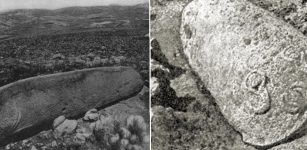 Mysterious 2000-Year-Old Carved Vishap Stone Monuments Of Armenia
Featured Stories | Dec 13, 2016
Mysterious 2000-Year-Old Carved Vishap Stone Monuments Of Armenia
Featured Stories | Dec 13, 2016 -
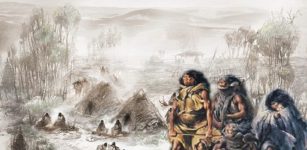 North America Was Settled By Previously Unknown People – DNA From A 11,500-Year-Old Skeleton Reveals
Archaeology | Jan 3, 2018
North America Was Settled By Previously Unknown People – DNA From A 11,500-Year-Old Skeleton Reveals
Archaeology | Jan 3, 2018 -
 Imhotep: Ancient Genius And Architect Of The Sakkara Pyramid
Featured Stories | Mar 7, 2016
Imhotep: Ancient Genius And Architect Of The Sakkara Pyramid
Featured Stories | Mar 7, 2016 -
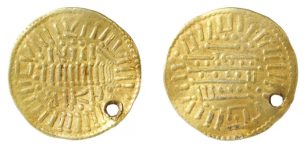 Vikings May Have Made Imitation Gold Dinar Found In Morston, Norfolk – Expert Says
Archaeology | Apr 5, 2023
Vikings May Have Made Imitation Gold Dinar Found In Morston, Norfolk – Expert Says
Archaeology | Apr 5, 2023 -
 3,800-Year-Old Wall Relief Created By Ancient Caral People Unearthed In Peru
Archaeology | Aug 28, 2018
3,800-Year-Old Wall Relief Created By Ancient Caral People Unearthed In Peru
Archaeology | Aug 28, 2018 -
 Flying Objects Were Present In Ancient Skies
Ancient Mysteries | May 9, 2014
Flying Objects Were Present In Ancient Skies
Ancient Mysteries | May 9, 2014 -
 Stone Toilet Of A First Temple Period Luxury Villa Reveals The Jerusalem Elite Suffered From Infectious Disease
Archaeology | Jan 4, 2022
Stone Toilet Of A First Temple Period Luxury Villa Reveals The Jerusalem Elite Suffered From Infectious Disease
Archaeology | Jan 4, 2022 -
 Mysterious Ancient Inscriptions Never Meant To Be Read – Biblical Secrets Revealed
Ancient Mysteries | May 17, 2018
Mysterious Ancient Inscriptions Never Meant To Be Read – Biblical Secrets Revealed
Ancient Mysteries | May 17, 2018 -
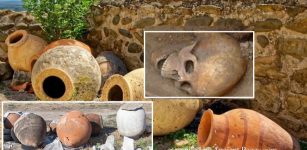 Researchers Develop New Ways Of Visualizing Ancient Small Objects By Combining Technologies
Archaeology | Apr 20, 2022
Researchers Develop New Ways Of Visualizing Ancient Small Objects By Combining Technologies
Archaeology | Apr 20, 2022 -
 Who Were Or Are The Ninja – Those Ancient Spies And Mercenaries?
Featured Stories | Jul 3, 2018
Who Were Or Are The Ninja – Those Ancient Spies And Mercenaries?
Featured Stories | Jul 3, 2018 -
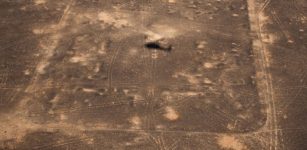 ‘Spectacular’ New Find: Roman Military Camps In Desert Found By Archaeologists Using Google Earth
Archaeology | Apr 27, 2023
‘Spectacular’ New Find: Roman Military Camps In Desert Found By Archaeologists Using Google Earth
Archaeology | Apr 27, 2023 -
 Scribes: One Of The Noblest And Highly Recommended Professions In Ancient Egypt
Featured Stories | May 10, 2023
Scribes: One Of The Noblest And Highly Recommended Professions In Ancient Egypt
Featured Stories | May 10, 2023 -
 Nail Polish Was Used In 3,000 B.C. – Color Of Fingernails Indicated Social Status In Ancient China And Egypt
Ancient History Facts | Jan 11, 2018
Nail Polish Was Used In 3,000 B.C. – Color Of Fingernails Indicated Social Status In Ancient China And Egypt
Ancient History Facts | Jan 11, 2018 -
 Author’s Encounter With A Mysterious Not Of This World Entity Inside Callixtus Catacombs
Featured Stories | Apr 5, 2020
Author’s Encounter With A Mysterious Not Of This World Entity Inside Callixtus Catacombs
Featured Stories | Apr 5, 2020 -
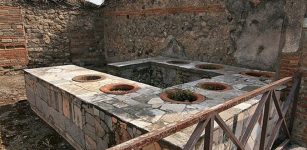 Thermopolium – Ancient Roman Restaurant Offered Fast Food But Was It A Good Idea To Eat There?
Ancient History Facts | Mar 16, 2018
Thermopolium – Ancient Roman Restaurant Offered Fast Food But Was It A Good Idea To Eat There?
Ancient History Facts | Mar 16, 2018 -
 Nue – Mysterious Mythological Shape-Shifting Creature Transforming Into A Black Cloud
Featured Stories | Jun 12, 2020
Nue – Mysterious Mythological Shape-Shifting Creature Transforming Into A Black Cloud
Featured Stories | Jun 12, 2020 -
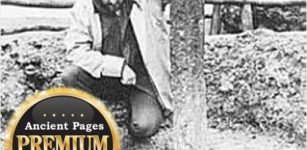 The Iron Man In The Kottenforst And Other Puzzling Ancient Artifacts Of Unknown Origin And Purpose
Ancient Mysteries | Mar 10, 2014
The Iron Man In The Kottenforst And Other Puzzling Ancient Artifacts Of Unknown Origin And Purpose
Ancient Mysteries | Mar 10, 2014 -
 On This Day In History: National Foundation Day Celebrated In Japan – On Feb 11, 660 AD
News | Feb 11, 2017
On This Day In History: National Foundation Day Celebrated In Japan – On Feb 11, 660 AD
News | Feb 11, 2017

